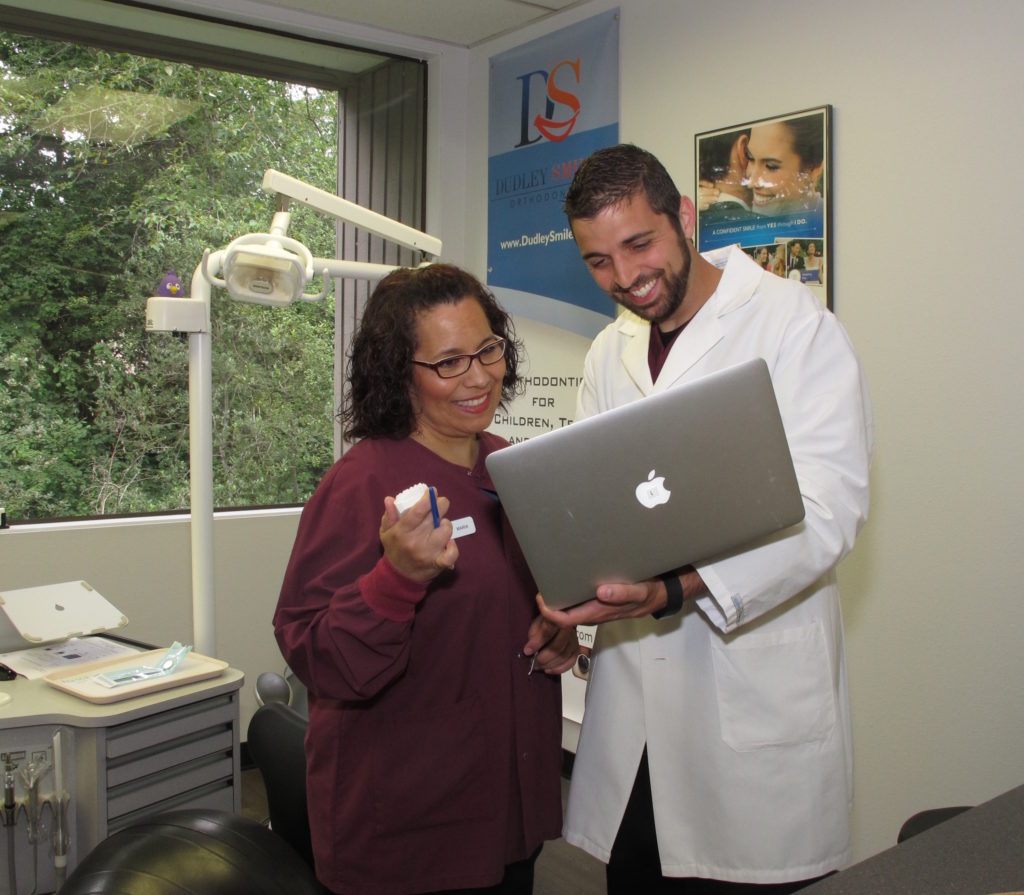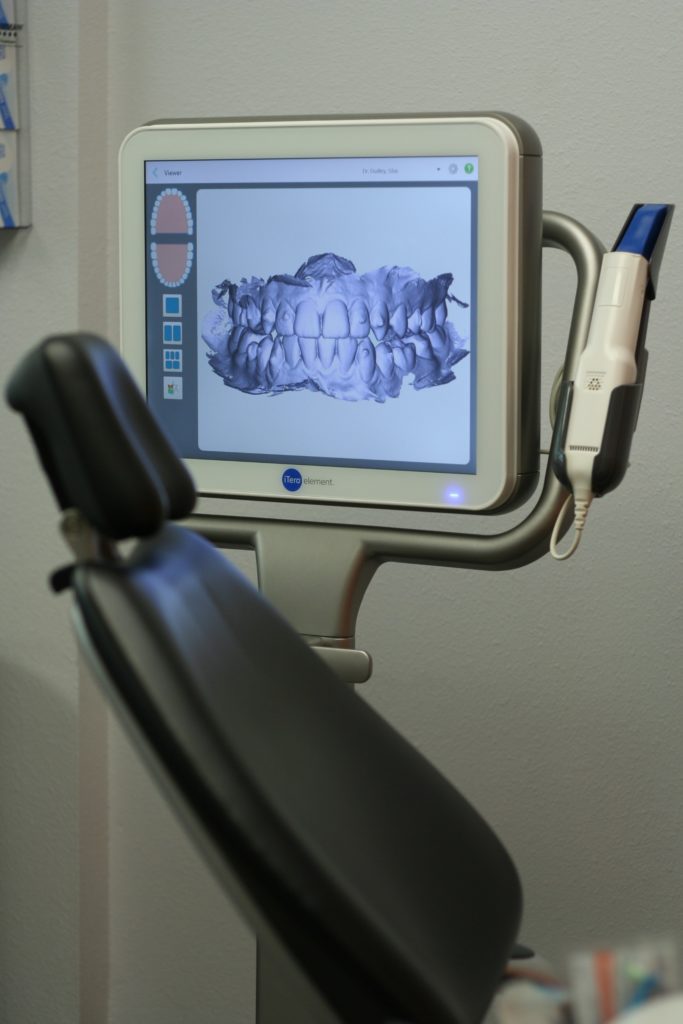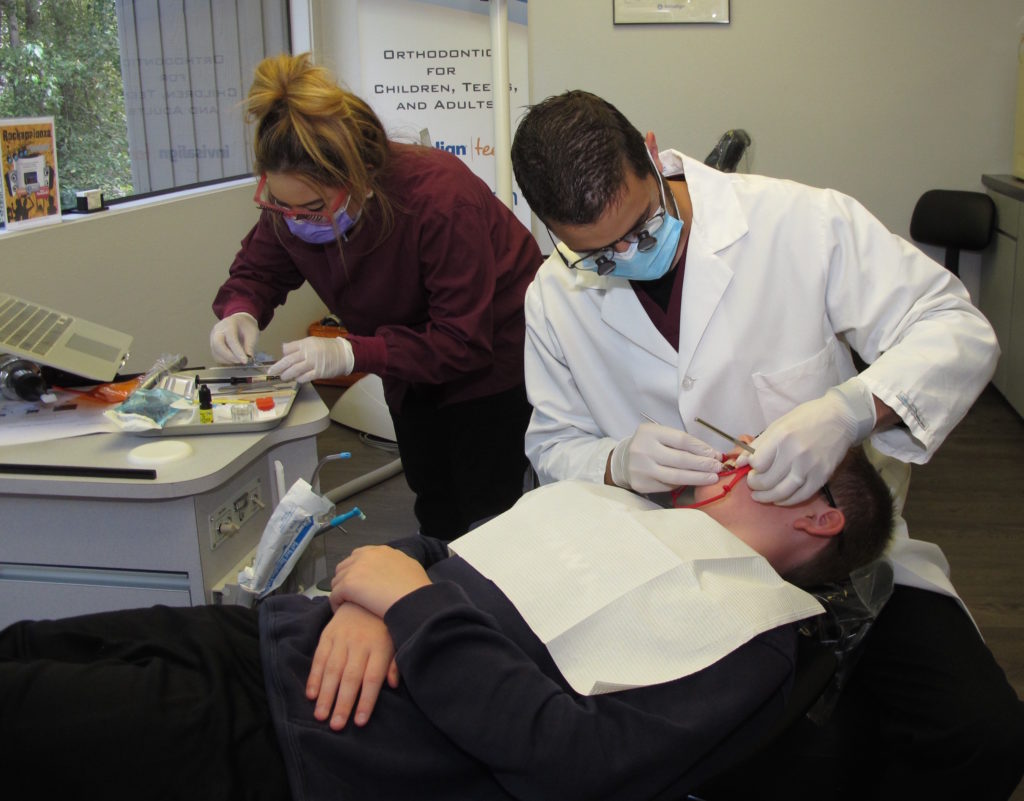What Are the Benefits of Braces Besides Straight Teeth?
July 30, 2018

Even as an orthodontic patient, malocclusion probably isn’t a word you’ve heard very often. It’s a more technical term for describing any misalignment that exists between the teeth and bite, which is something we see and correct on a regular basis here Dudley Smiles. Malocclusions occur when a person’s mismatched teeth and jaws cause them to have a “bad” bite. This can result in a number of issues, including crooked, crowded, or protruding teeth, gum problems, temporomandibular joint dysfunction (TMD), headaches, and even sleep disorders. A bad bite may also affect a person’s overall appearance, their speech, and their ability to eat properly.
There are several different types of malocclusions. These vary from crooked teeth to overbites, and while some may be without any noticeable symptoms, others can be inconvenient, bothersome, or painful. If you’ve ever suspected a malocclusion in yourself or your child, keep reading below to learn more about the most common types we see, the symptoms they can cause, and what Dudley Smiles can do to successfully treat them.
The main classes of malocclusions
Class 1: This is the most common type of malocclusion, and it is characterized by the upper teeth slightly overlapping the lower ones in what would be an otherwise normal bite.
Class 2: This malocclusion consists of an overbite, where the upper jaw and the upper teeth overlap the lower jaw and teeth abnormally.
Class 3: Patients with a class 3 malocclusion have an underbite, which occurs when the lower jaw and lower teeth overlap the upper jaw and the upper teeth.
The different types of malocclusions
Overcrowding
Overcrowding is a common orthodontic condition, and tends to be the biggest reason we see for adults seeking orthodontic treatment. Overcrowding is often due to a lack of space, which can result in teeth that are crooked and possibly overlapping.
Spacing
Spacing issues usually occur between two or more teeth. When there is too much or not enough space for the teeth, it can result in the kind of crowding that can impact the eruption of the permanent teeth. Some of the things we see causing this type of malocclusion to include missing teeth, small teeth, tongue thrusting, and thumb sucking.
Openbite
Patients with an open bite have front teeth that do not overlap the lower teeth. When the upper and lower front teeth don’t overlap, it results in an opening that leads straight into the mouth. An open bite that affects the front teeth is known as an anterior open bite, but the problem can also occur on the sides of the mouth.
Overbite
Another common issue, an increased overbite can cause your front teeth to bite down onto your gums, or your lower front teeth to bite into the roof of your mouth.

Underbite (or anterior crossbite)
In cases where the lower front teeth are positioned much further forward than the upper front teeth, it results in an underbite, which is also known as an anterior crossbite.
Overjet
Not to be confused with an overbite, a patient with an overjet has top teeth that extend past the bottom teeth horizontally. This protrusion can interfere with proper chewing and speaking.
Crossbite
A crossbite occurs when the upper teeth bite inside the lower teeth. This can happen on one or both sides of your jaw, and can affect the front or back teeth.
Diastema
This is another term for “gap teeth”, or any space that exists between two adjacent teeth. The two front teeth are the most common site for a diastema.
Missing tooth
Also known as hypodontia, this malocclusion can occur as a result of trauma, or from something as simple as the improper development of the teeth.
Common causes of malocclusions
Although most malocclusions are inherited conditions, they can also occur due to certain conditions, or from habits that lead to changes in the shape and structure of the jaw. Some of the most common causes of malocclusion include:
Symptoms of malocclusions
Depending on the type of malocclusion present, the associated symptoms may be nonexistent, mild, moderate, or severe. Some of the more common symptoms include:
Even if no symptoms are present, your dentist will be checking for malocclusions during regular check-ups, particularly in children. If your teeth appear to be misaligned or your jaw seems distorted, you may be referred to an orthodontist like Dr. Dudley. He will examine your teeth and mouth, take x-rays of your teeth and face, and go over your past medical history to identify any existing health problems. If a malocclusion is identified and orthodontic treatment is indicated, we will create a customized treatment plan to correct your specific issue.
Regular dental visits are important in order to identify any dental problems early on so that treatment can be initiated before issues become more serious. The same holds true for orthodontic visits. The American Association of Orthodontists recommends that every child have their first orthodontic evaluation by around the age of seven for this reason. Dental check-ups should commence by a baby’s first birthday.

Treating malocclusions
Many cases of malocclusion are so minor that they never require corrective treatment. However, moderate to severe malocclusions in any class will likely benefit from some form of corrective treatment. This can include removing teeth, putting on braces, customizing aligners, using retainers or oral splints, or surgery, although this is generally seen as a last resort option when it comes to treatment. Braces, tooth extraction, and retainers or oral splints may be administered alone or simultaneously, depending on the case and the desired outcome.
There’s more to treating a malocclusion than achieving a proper bite and an aligned smile. Treatment can make the teeth easier to brush and floss, reducing the risk of cavities and tooth decay, and improving oral health overall. It can also limit any strain placed on the teeth and jaw, reducing the potential of broken or chipped teeth, and issues with the TMJ.
Get the smile you deserve at Dudley Smiles
Do you have a child ready for their first orthodontic exam? Are you wondering if you could benefit from orthodontic treatment yourself? We would love to take a look to make sure everything is lining up as it should! Dudley Smiles offers a free initial consultation is free, and at its conclusion, Dr. Dudley will be able to let you know of any orthodontic issues he finds. From there, our team will create a custom treatment plan for you based on your specific diagnosis and goals. If you’re in Issaquah, Kent, or the surrounding area, and want to know more about malocclusions or how orthodontic treatment can benefit you, get in touch with us today. There’s never been a better time to let us make your dream smile a reality!